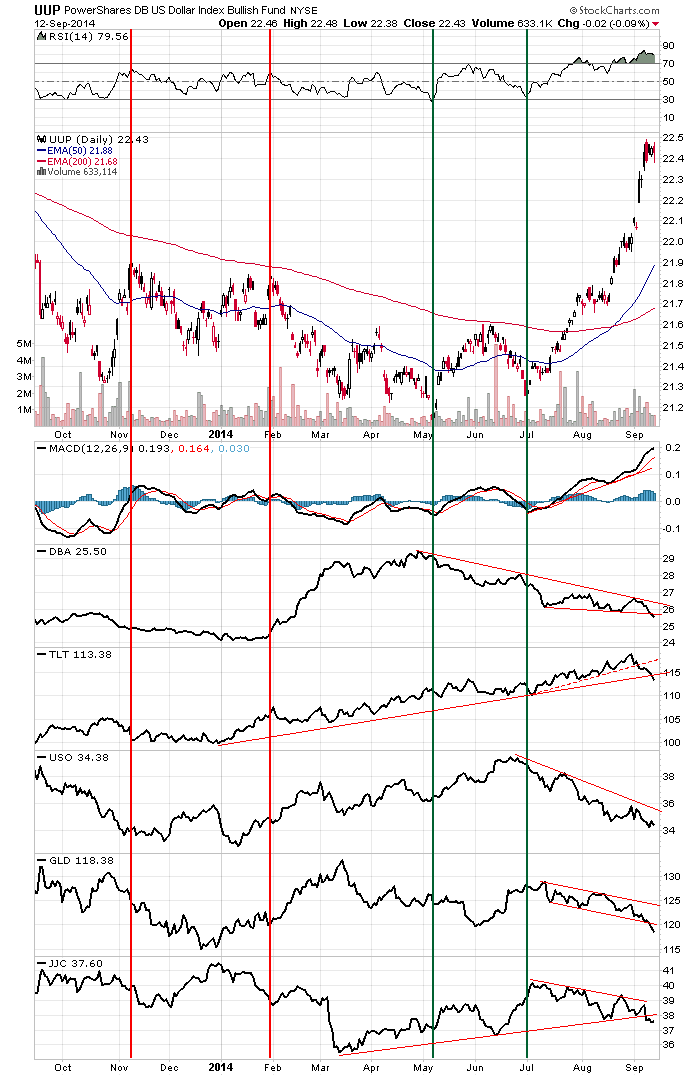With interest rates breaking out to new highs it's interesting to speculate on the implications for the Real Estate Industry.
As noted
here 10yr Interest Rates recently broke an 8 year trendline signalling higher rates ahead. Curiously, over long term periods interest rate movements don't appear to have a direct correlation to home sales.
This chart of Used Home Sales shows the sharp dropoff in sales that started in 2007. Used Home Sales continued to drop thru 2012. This decline in sales was during a period of declining interest rates as seen in the interest rate chart at the top. Sales of Used Homes began increasing at the beginning of 2013 which was shortly after interest rates turned up. It seems Home Sales are more tightly correlated to strength in the economy and consumer confidence rather than strictly tied to interest rate movements. Reasonably higher interest rates don't spell doom for the housing market.
The Homebuilding Industry doesn't appear to be affected too greatly by higher rates either.
When rates spiked starting in May, the Homebuilders had just come off a strong run from the 2009 bottom. As rates quickly jumped 87%, the Homies corrected a mere 14%. Since the rate run started again in November both rates and Homebuilder stock prices are both headed up. Higher interest rates aren't an impediment to higher Homebuilder stock prices.
Mortgage refinancing have dropped sharply throughout 2013. Refinancing is highly sensitive to interest rates changes since most homeowners would voluntarily agree to higher mortgage payments. The prospects of higher interests rate is going to continue to make life for Mortgage Brokers increasing difficult. As it stands now, any loans a Broker made since 2011 is now dead money, since few of their clients from then will refi again. Of course this also suggests than any borrower who intends to stay in their home should refinance now.
Higher interest rates are helping Regional Banks out.
Banner Bank's stock price is up 32% since September. Regional Banks have had difficulty making money in the ultra loan interest rate environment. Even with a cost of funds from depositors near .3% it is hard for banks to make money lending it out at 4%. The Fed's pledge to keep short rates near 0% while opportunities to lend it out at higher rates has made regional banks an appealing investment for investors. This situation ought to entice the Regional Banks back into real estate A&D loans now that they have better rate spreads and more evidence of a rebounded housing market.

Income Producing properties prices have rebounded quicker than residential. Ultra lows interest rates have benefited Cap Rate calculations supporting higher prices. An increase in interest rates will weaken Cap Rate calculations. Cash flow will become an increasingly important investment criteria for income producing properties. Without strong cash flows the standard ploy in a declining interest rate environment of a cash out refi without a paydown of principal will be more difficult to accomplish.
The prospects of higher interest rates will create many winners and losers within the Real Estate Industry. The key question remains why interest rates rise. If it is within the context of an improving economy then the impact on the Real Estate Industry should be taken in stride. If higher rates are the result of the removal of artificial support from the Fed the outcomes will be significantly different.






























